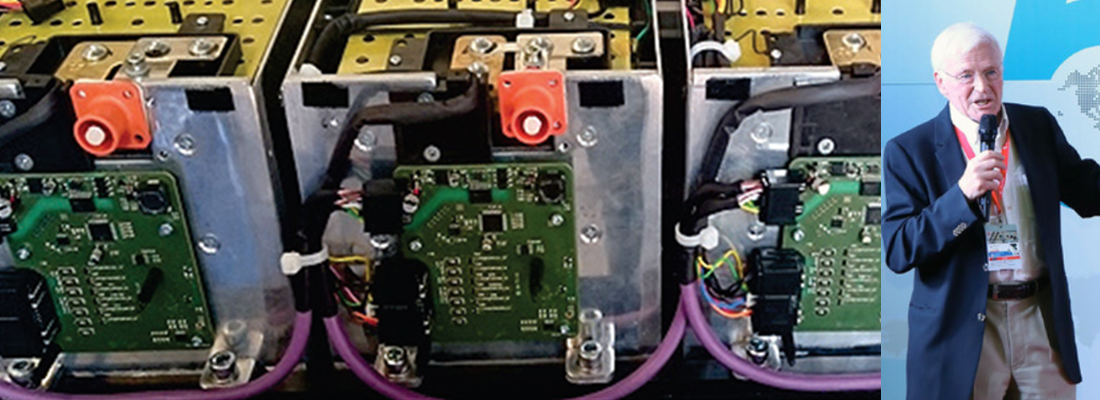Range-extender electric vehicles
One of the most significant challenges that EV owners face is the vehicle's limited range. This can cause range anxiety, or the fear of running out of battery power before reaching your destination. This is also a significant barrier for drivers who may be considering purchasing an electric vehicle. As it turns out, this is where range extenders come in. REEVs, or extended-range electric vehicles, are a type of hybrid vehicle that combines the advantages of EVs with traditional gasoline-powered vehicles. This technology allows the vehicle to travel beyond the battery range by using a powertrain with a small internal combustion engine to act as a generator for the electric motor, which is still responsible for moving the wheels. This reduces range anxiety and the need for refuelling, making it a more practical option for drivers who must travel long distances.
How does the REEV technology work?
A range extender is a piece of technology that allows electric vehicles to travel further than their normal driving range. When the battery bank runs low on power, it charges the battery using a small internal combustion engine that acts as a generator. When the battery is depleted, the micro-gas turbine, which is typically powered by petrol, diesel or natural gas, supplies electricity to the electric motors. This increases the vehicle's range and reduces range anxiety, making it a more practical option for drivers who frequently travel long distances. Range extender technology is especially beneficial for drivers who live in areas with limited charging infrastructure or must travel long distances without access to charging stations. Drivers can get the best of both worlds with an EV range extender, which combines the environmental benefits of an EV with the extended range of a gasoline-powered vehicle. A range extender operates by utilising a small internal combustion engine to generate electricity to power an electric motor. When the battery is completely charged, the electric motor powers the vehicle while the range extender remains idle. When the battery charge falls below a certain threshold, the range extender activates to provide power to the electric motor. This increases the vehicle's range, allowing drivers to travel farther on a single charge. The range extender engine is designed to operate at a constant speed, which is ideal for generating electricity. This makes it more efficient than a traditional petrol engine, which must constantly change speeds to meet the vehicle's power requirements. The engine generates electricity, which powers the electric motor that propels the vehicle forward.
It is important to note that a REEV differs from a plug-in hybrid (PHEV). Plug-in hybrid vehicles use a smaller battery pack and a petrol engine to power the wheels when the battery is depleted. In contrast, REEVs have a large battery and an engine that only generates electricity to charge the battery. This means that the vehicle's primary power source remains electricity, with the engine serving as an auxiliary power unit to extend range as needed.
REEVs or PHEVs?
REEVs typically have an all-electric range of 80-130 kilometres before the range extender engine takes over to provide additional power. Once the range extender engine is activated, the vehicle can typically drive for an additional 320-480 kilometres or more. In comparison, PHEVs have an all-electric range of approximately 24-100 kilometres or more. Once the electric charge is depleted, PHEVs can continue to travel using their petrol engine for approximately 480-640 kilometres, depending on the vehicle and driving conditions. REEVs may have lower fuel and maintenance costs than PHEVs because they use more electricity. However, their higher initial cost may make them less cost-effective in the long run, particularly if you do not drive long distances frequently. PHEVs, on the other hand, typically have lower upfront costs and can be more cost-effective in the short term, particularly if you drive long distances frequently. However, their reliance on petrol can result in higher fuel costs over time, and they may necessitate more maintenance than REEVs.
The current market of range extenders models
- BMW i3 Range Extender - 0.6-liter two-cylinder gas engine
- Chevrolet Volt - 1.5-liter four-cylinder gas engine
- Fisker Karma - 2.0-liter four-cylinder gas engine
- Opel Ampera - 1.4-liter four-cylinder gas engine
- Toyota Prius Prime – A plug-in hybrid with an EV range extender. It has a 8.8 kWh battery and a 1.8-liter four-cylinder engine
- Honda Clarity Plug-in Hybrid - A plug-in hybrid with an EV range extender. It has a 17-kWh battery and a 1.5-liter four-cylinder engine
- Ineos Fusilier – An all-electric off-road with range extender. Engines’ data not still available
Benefits of REEVs
These provide numerous advantages to drivers, including:
Increased Range - One of the most significant advantages of owning a REEV is its increased range. Drivers can travel further on a single charge, making it a more practical option for those who frequently travel long distances. Reduced Range Anxiety - Range anxiety is a common concern among electric vehicle owners. This fear is greatly reduced in REEVs because the range extender serves as a backup, providing additional power when needed. Improved Efficiency - REEVs are generally more efficient than traditional gasoline-powered vehicles because they rely on electricity rather than gasoline. This makes them a more environmentally friendly choice for drivers concerned with their carbon footprint. Lower Fuel Costs - When compared to traditional gasoline-powered vehicles, REEVs can provide significant fuel cost savings. Drivers save money on petrol because they rely more on electric power, and they can also take advantage of lower electricity rates during off-peak hours. Reduced Emissions - REEVs produce fewer pollutants and greenhouse gases than traditional gasoline-powered vehicles, making them a more environmentally friendly choice. This is especially true when they operate solely on electricity, resulting in zero emissions. The environmental impact is frequently a compelling reason for people to weigh the advantages of electric versus petrol cars when making transportation decisions. Practicality - REEVs combine the utility of a gas-powered vehicle with the environmental benefits of an EV. They can be refuelled quickly, just like a conventional gasoline-powered vehicle, and have the extended range of an EV.
Share your remanufacturing stories with us
Do you have an innovation, research results or an other interesting topic you would like to share with the remanufacturing industry? The Rematec website and social media channels are a great platform to showcase your stories!
Please contact our Brand Marketing Manager.
Are you an Rematec exhibitor?
Make sure you add your latest press releases to your Company Profile in the Exhibitor Portal for free exposure.






